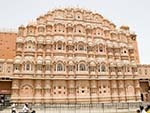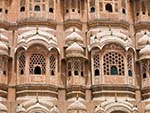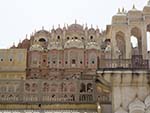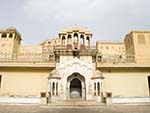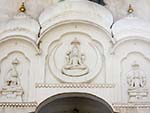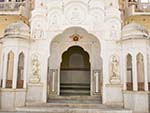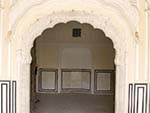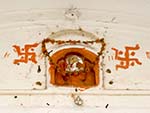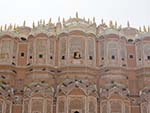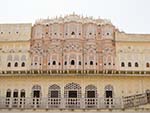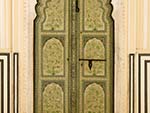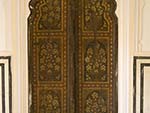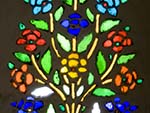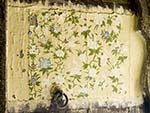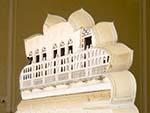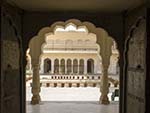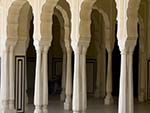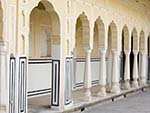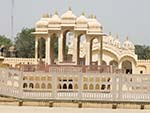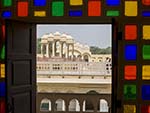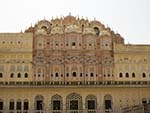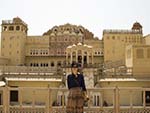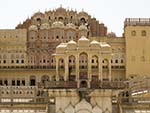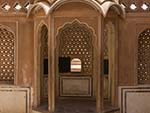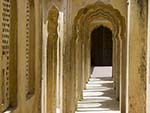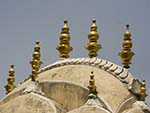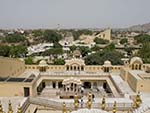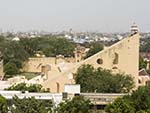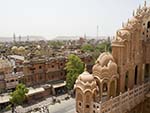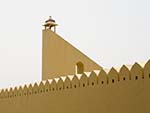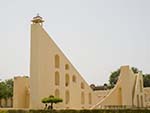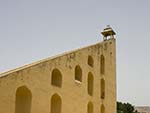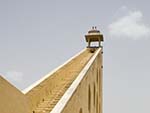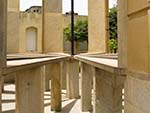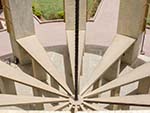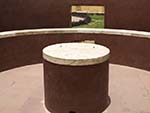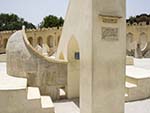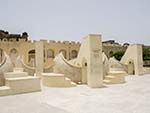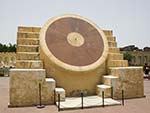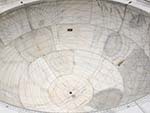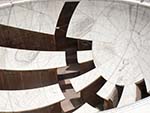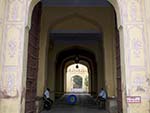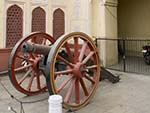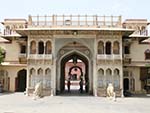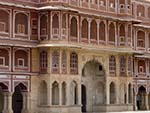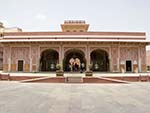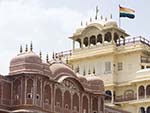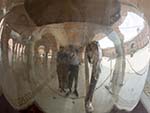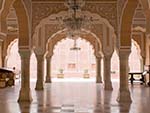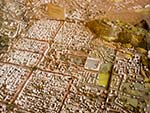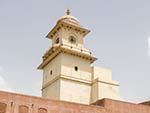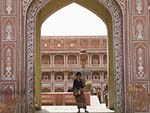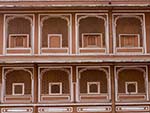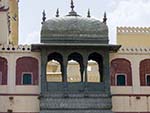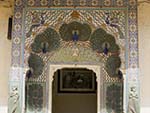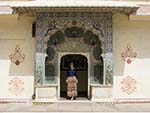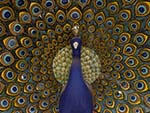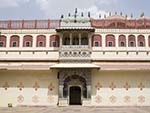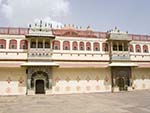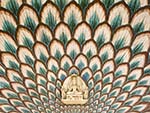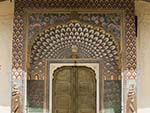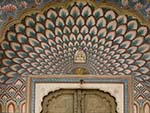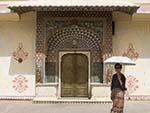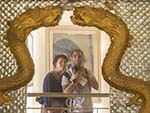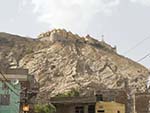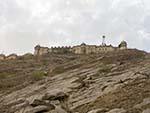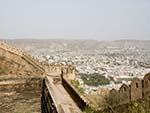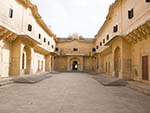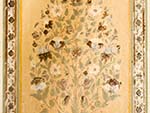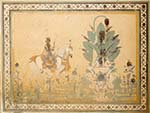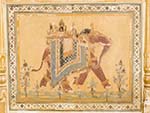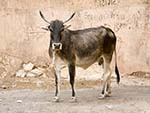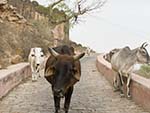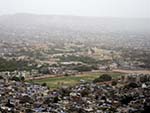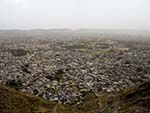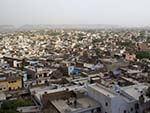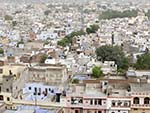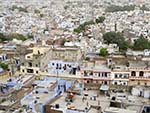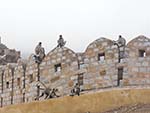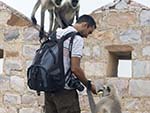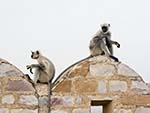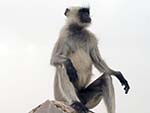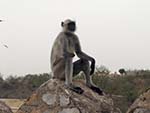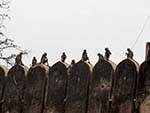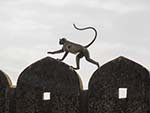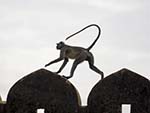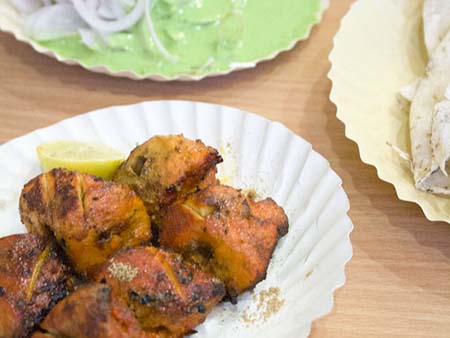Continuing our ‘gold triangle’ leg of India, we caught a five hour bus ride from Agra to Jaipur, the entrance to the Rajasthan region. Jaipur is also known as the Paris of India and the Pink City, though I didn’t find it particularly pink at this time.
On arrival, we found it extremely difficult to find a hotel with vacancies, our auto-rickshaw driver somehow knew this, and even after seeing a few of the Lonely Planet recommendations that were all full, we took his advice and used one of his recommendations. Unfortunately, like many of the hotels it wasn’t walking distance to the main square.
After we checked in we decided to follow the LP’s Jaipur City Walking Tour, this gave us a feel for the city and also allowed us to see a few of the main sights with sunset light.
The next day we checked-out some of the main Jaipur tourist attractions.
Hawa Mahal (Palace of Winds)
Early in the morning we made our way to the Hawa Mahal (or Palace of Winds). The Hawa Mahal has an amazing exterior facade, looking similar to the honeycomb of a beehive. These individual windows allowed for the ladies to view the streets without being observed themselves, this practice known as purdah is similar in concept to the veils worn by Islamic women.
Inside the palace was a maze of hallways and rooms, all intricately decorated with colour and floral decorations. From the highest levels, the Jantar Mantar and City Palace was visible, our next destinations.
thydzikgooglemap(http://sonyaandtravis.com/maps/jaipur-rajasthan-india-hawa-mahal.xml,s)
Jantar Mantar
Jantar Mantar (literally calculation instrument) is a collection of architectural astronomical instruments and was one of the more interesting sights I had seen. Again we decided to get the audio tour, though even for me, an engineer, I found the content far too complex.
There are fourteen instruments, the largest known as the Samrat Yantra, the world’s largest sundial at twenty-seven metres high. The collection made for great photos, unfortunately, I got told-off by one of the guards when I tried climbing them.
thydzikgooglemap(http://sonyaandtravis.com/maps/jaipur-rajasthan-india-jantar-mantar.xml,s)
City Palace
Nearby the Jantar Mantar is the Jaipur City Palace, a huge complex, with portions still in use by the royal family and sealed off from tourists.
The highlight of the palace for me was the Pitam Niwas Chowk, an inner courtyard surrounded by four gateways each representing a different season and adorned with amazing decorations. The most famous is the Peacock Gate, which represents the season autumn.
The colour of the buildings is the origin of the term Pink City, having been painted on the visit of the Prince of Wales in 1853 in a show of hospitality.
thydzikgooglemap(http://sonyaandtravis.com/maps/jaipur-rajasthan-india-city-palace.xml,s)
Nahargarh Fort
From the City Palace we made our way north along the south face of the Aravalli Hill to the Nahargarh Fort. The fort, whilst unrestored, still showed some amazing frescos. Looking over the fortification walls was a beautiful view of Jaipur City below.
thydzikgooglemap(http://sonyaandtravis.com/maps/jaipur-rajasthan-india-nahargarh-fort.xml,s)
Jaipurian Langurs
A trip to an Indian city isn’t complete without bumping into a few monkeys. At Naharagarh Fort we came across into a troop of friendly Jaipurian Langurs, I had fun feeding them our mango skins, until one of them grabbed the whole bag full.
We made our way back down the hill, passing a few cows that were also making the journey down, though somewhat slower.
That night we had some of the most delicious (and cheap) chicken tikka masala at local restaurant.




































































































